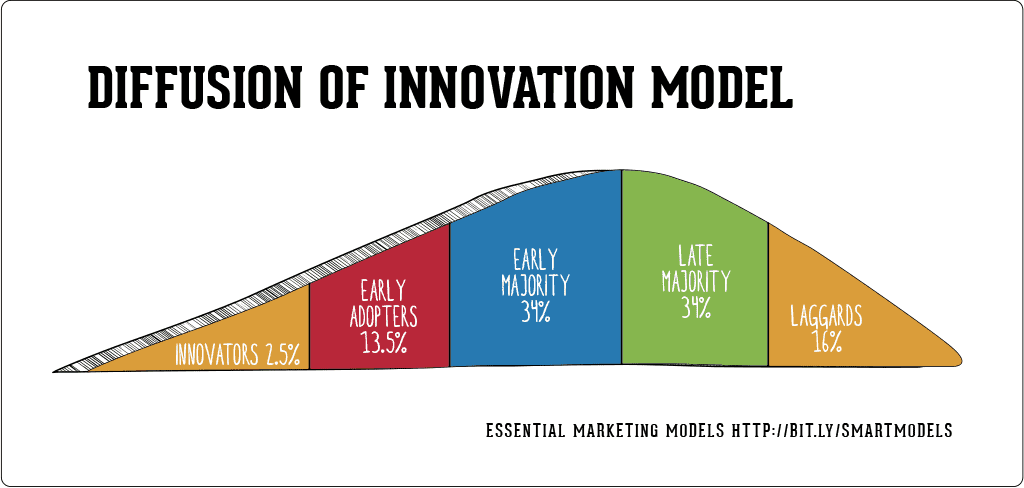The Diffusion of Innovation Theory is a framework that explains how new ideas, products, or technologies are adopted and spread through a population over time. Developed by sociologist Everett Rogers in the 1960s, the theory describes the process by which innovations are communicated, accepted, and adopted by individuals and groups within a society. The Diffusion of Innovation theory also identifies factors that influence the adoption process, such as the perceived relative advantage of the innovation, its compatibility with existing values and practices, the complexity of the innovation, the ability to try the innovation on a trial basis, and the level of social influence and communication channels used to promote the innovation. The United States Postal Service can be analyzed through the lens of the Diffusion of Innovation theory.
During the 1700s, there were no modern means of communication like social media, the internet, telephones, or email. The only way of communicating was through the delivery of mail by horseback. In 1775, after the battles of Lexington and Concord, which kicked off the Revolutionary War, there was an emergent need for a safe and dependable mailing service. So at this time, during the "experimental" stage of this new innovation, the Second Continental Congress appointed Benjamin Franklin to establish a national mail service and named him the first Postmaster General. While Benjamin Franklin was not an investor in the traditional sense, he is considered one of the early pioneers of the U.S. Postal Service and used his influence and expertise to shape the organizational structure and operational procedures of the early American postal system.
During its early years in the "uptake" stage, the U.S. Postal Service primarily facilitated communication among government officials and military personnel, enabling them to exchange information, letters, and documents across long distances. The U.S. Postal Service has long been used as a reliable and secure means of communication for government entities at all levels.
As the country expanded and the population grew, the U.S. Postal Service played an increasingly important role in connecting communities and facilitating commerce. Private citizens, businesses, and organizations were the early majority and began to use the national post service for sending and receiving personal correspondence, business communications, newspapers, and other printed materials.
During the "maturation" stage, although there was not much information referring to people who were "skeptical" of the innovation, there were some that could be considered the late majority. Emerging in the 1700s, the national post service didn't really have any competition other than mail being delivered by horseback. The postal service also didn't have to compete with other mailing services because that was it at the time. However, there were many people living in remote or rural areas with limited access to transportation and communication infrastructure that weren't able to jump on board with this growing innovation. These areas had lower utilization of the postal service compared to more urban areas.
Looking at the United States Postal Service today, many questions arise, such as "Why do we still have the U.S. mail service" or "How much longer will we have it?" Younger generations, particularly millennials and Gen Z, have grown up in the digital era with easy access to internet-based communication tools such as email, social media, messaging apps, and other digital platforms. These digital alternatives provide convenient, fast, and often free means of communication, which may have reduced the reliance on physical mail services for certain types of communication, such as personal letters or casual correspondence. Many businesses and companies as well now rely heavily on only digital communication channels and electronic methods for sending and receiving messages.
Although the rise of digital communications has taken over, the U.S. Postal Service is focused on actively adapting in various ways to keep up with today's times. For one, it has expanded its online services to provide convenient options for customers to manage their mail and packages digitally. They also provide online services for informed delivery, package tracking, postage printing, and scheduling package pickups, which can save time and reduce the need for physical visits to the post office. Additionally, the U.S. Postal Service has developed a mobile application, making it easier for customers to access the postal services on the go. Lastly, the mail service has more recently established partnerships with e-commerce platforms and businesses to facilitate package deliveries. Many Online retailers and marketplaces such as Amazon, eBay, and Shopify still largely rely on the postal service for last-mile delivery of their packages. These partnerships allow the U.S. Postal Service to leverage the growth of e-commerce and digital transactions to continue providing delivery services in the digital age.
Even though the United States Postal Service continuously loses billions annually, I don't believe this is the end of this nationally-known and globally recognized mailing service. The U.S. Postal Service has a mandate to provide affordable and accessible mail service to all Americans, regardless of their location, including remote and rural areas. This universal service obligation makes the postal service the only postal carrier that reaches every mailbox in the nation. They also have the responsibility for linking communities and individuals who may not have access to internet services or other new modern means of communication. The United States Postal Service has and will always play a vital role as it has been delivering mail in the United States since the beginning of our country.






No comments:
Post a Comment